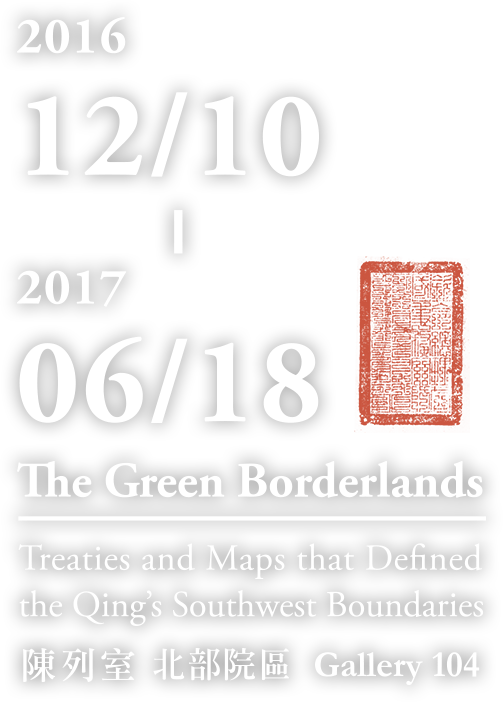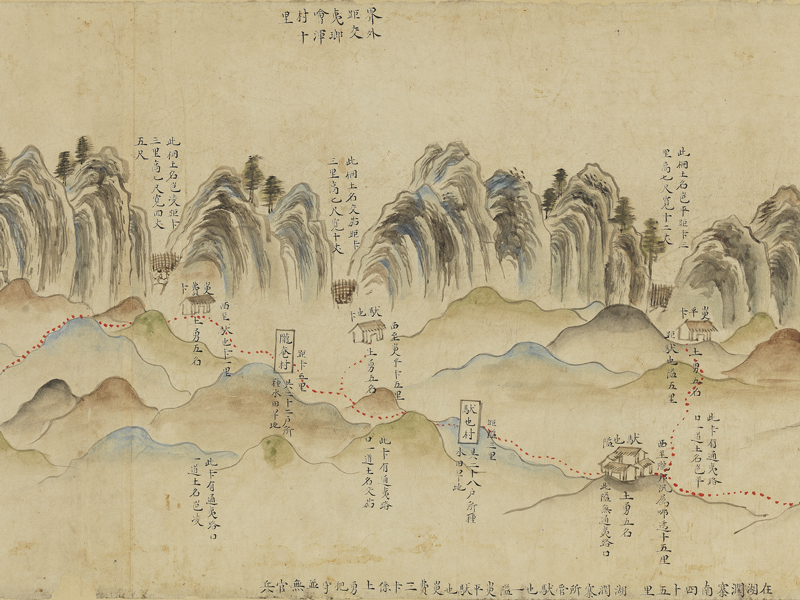Before the mid-Qing dynasty - that is, prior to France and Great Britain taking control of Vietnam and Burma, respectively - the Chinese government saw its two southern neighbors as vassals, and under the imperial worldview that "Under the whole heaven, every spot is the sovereign's ground," the concept of national borders was very vague. As the Qing government never formally demarcated borders with Vietnam and Burma or signed any boundary treaties with them, the Museum's collection of historical documents and cartographic materials produced before the Daoguang reign do not carry precise descriptions of Sino-Vietnamese and Sino-Burmese borders.
Map of Yunnan Province
- Qing dynasty
- Colors on silk
- 60.5 x 100.5 cm
Hand-drawn Map of Border Fortifications
- Qing dynasty
- Colors on paper
- 29 x 700 cm



